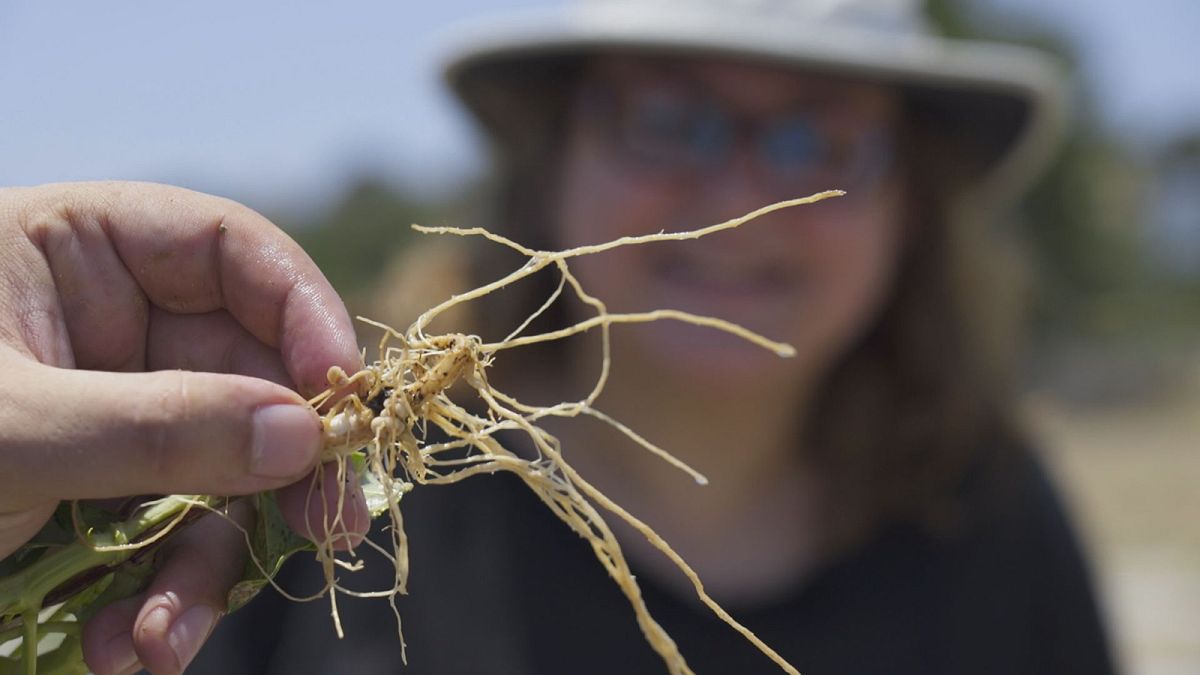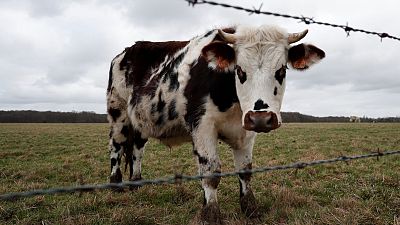How to increase the biodiversity of corn crops in Europe while improving its quality, yield and resilience in natural, sustainable ways?
Researchers in Cyprus want to understand how Europe can produce a bigger biodiversity of crops while improving its yield, quality, resilience and taste. They are literally digging deep in a special plantation in their quest for answers.
In an experimental field that covers some 11 hectares, more than 20 varieties are grown, including corn.
Scientists from a European research project are testing an experimental breeding technology aimed at identifying plants better adapted to Cyprus´ scorching heat and lack of water.
Each corn plant is genetically different.
All are given close attention, especially their roots.
Dionysia Fasoula, a plant breeder from the Cyprus Agricultural Research Institute says: "We examine both quantitative and quality parameters. Quantitative parameters help us establish plant yield and the stability of that yield. They are more difficult to assess, as they are heavily influenced by the environment around. When it comes to quality parameters, we mainly focus on nutrient content but also on the leaf biomass."
The research also includes barley, ancient wheat, chickpeas and cowpeas.
Once identified, the more promising candidates will be naturally crossed among them to produce drought-resistant varieties.
No genetically modified organisms are used.
According to Michalis Omirou, an environmental microbiologist at the Cyprus Agricultural Research Institute: "Our objective is to increase the biodiversity on our agricultural ecosystems. And so we are looking at past, traditional species that are no longer grown here anymore. These old traditional species (genotypes) had characteristics that make them suitable not only to diversify our crops but also to improve the quality and the taste of products that can be enjoyed by the consumers."
Soil and root samples are taken to labs.
Researchers want to understand how plants can increase their yield and improve their drought resistance by better interacting with underground microbes.
"The relationship between plants and fungi can be useful for both of them, good just for one of them or it could be parasitic," says Athanasia Kavadia, an agricultural microbiologist at the Cyprus Agricultural Research Institute. "So we need to understand closely this interaction. Basically, the plant gives carbon to the fungi, and the fungi finds in the soil nutrients and transfers them to the plant."
Researchers hope their work will help local farmers increase their offer and potential markets.
And that, scientists conclude, should also be good for consumers.
Fasoulsa adds: "We all remember from our childhood the wonderful taste of tomatoes of that time, or the taste of other vegetables, the flavours and the taste of those old times. So we focus on those traditional varieties with the aim of bringing them back to the production line. Producers will be able to provide a bigger array of products to the shops and supermarkets. And the consumers will be able to choose from a bigger variety of products with more flavours and better taste."
Researchers say new crops directly from their research could become a market reality in Europe in five years.
Click here to find out more information on this subject.




